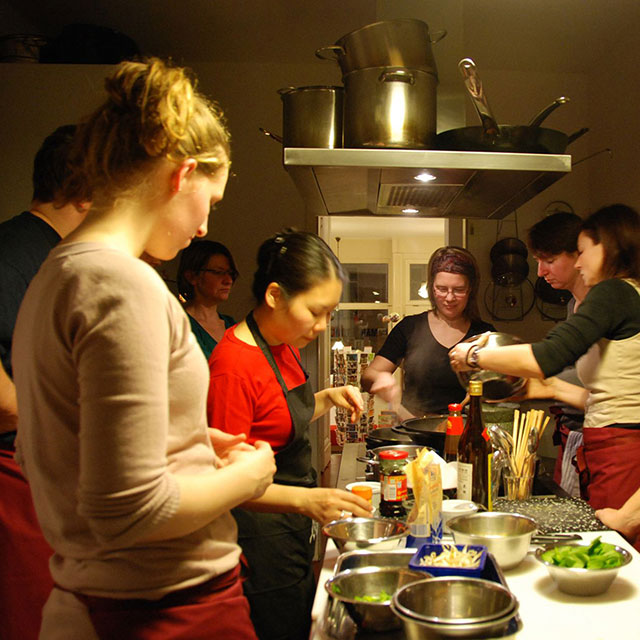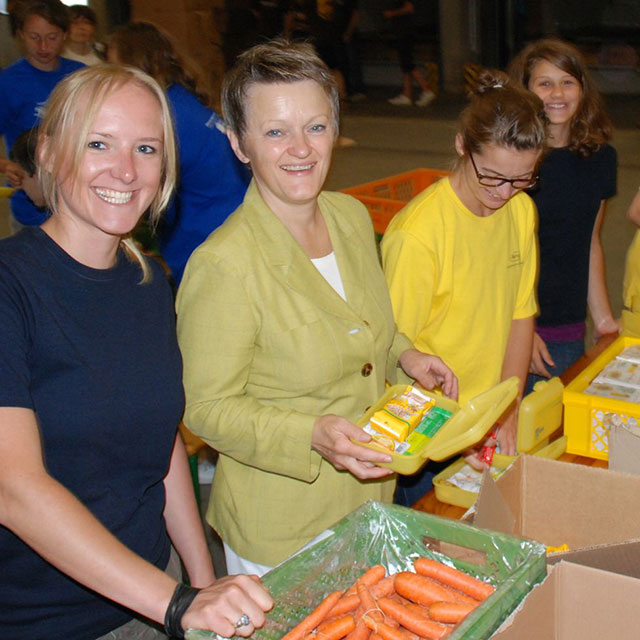The workforce establishes its own structure
Ökofrost is a Berlin-based wholesaler of organic frozen foods. The company supplies nationwide as well as beyond Germany’s borders. Sales have increased steadily in recent years. Now Ökofrost has an annual turnover of 9 million Euros.
As fast as the company has grown, it reached its profitability only two years ago. For many years the motto was: If there is not much money going around, not much money can be distributed either. Accordingly, until the end of 2011, the salaries of staff members were below average. Additionally, there were large pay differences between some of the 15 employees. It was left to the negotiating skills of each individual as to which end of the salary scale they would end up at.
This has not gone unnoticed within the workforce. Just as in many other companies, staff was talking about how much they would be paid at the end of the month. Those huge differences led to perplexity, deep sadness, and anger. For some employees, it even led to tears. They assumed that the small salary was an expression of little appreciation for their work performance.
At the end of 2011, the managing director of Ökofrost, Florian Gerull, felt that dissatisfaction among the workforce had slowly reached the boiling point. Gerull understood that these negative emotions had to be resolved. While taking long walks, he looked for solutions. The manager came to the conclusion that there was little point in trying to come up with an answer silently. Just recently, Gerull experienced a process of “waking up” within himself. From his point of view, the company was ready for a change as well.
Over the Christmas holidays, he decided that the entire workforce should be involved in finding a satisfactory solution to this salary imbalance. In January, Gerull invited the whole workforce to a meeting. Almost all employees participated. The goal of the event was to work together to find a new salary structure which would make all employees happy. Throughout the meeting, the whole team discussed values and objectives for a fairer salary model. A lot of time was invested in answering predominant questions such as “transparency versus secrecy” and “fixed salary versus negotiable income.” Topics such as holiday pay (which staff, to the surprise of the CEO, didn’t want), holiday entitlements, and educational development were also discussed in detail. At the end of this meeting, Gerull had a better understanding of the things that were important and not so important to his staff.
In the following days, the manager allowed enough time to organize all the information from the workshop into a congruent model. He took his coach as a sparring partner to give this model its finishing touch and invited the team and all employees to a second meeting. They agreed to the new salary model with only a few changes. “This model really contains everything we wished for in the first workshop. Something like that I’ve never seen before,” said one happy employee. However, before their boss could implement this new salary model, it had to be approved by all the shareholders. After all, it was their income which would be smaller since the employees would get significantly more money. After thorough discussions of the pros and cons of this new model, the approval was received from this crucial body of the company.
After a successful confirmation of the salary model in late January 2012, the new salary structure became effective retroactively from 1 January 2012. In individual discussions on the new salary structure, there were tears once again—but this time, they were tears of joy. Some employees got significantly more money than before. Even the two employees who did not participate in the process and who were disappointed with their low salaries are happy and satisfied with the outcome which their boss achieved so quickly. “The wounds of the past healed,” were the words of one of these two employees.
At the end of 2012, all participants will come together once again and make sure that the new solution is indeed suitable for everyone at Ökofrost. Upon our request, we got one answer from an employee: “It was important for me to understand the views and opinions of others, which in turn got me closer to them. Throughout the discussion, we kept coming back to one common denominator: ‘Values’ and what other factors, besides fair salary, would weigh in on the satisfaction of an individual. Or respectively: This development gave me faith and perseverance in Ökofrost. The long waiting with all its struggles finally paid off.”
We like this example because it shows how critical flexibility is, even for an enterprise to change from an unhealthy to a healthy environment. Aaron Antonovsky designates—besides meaningfulness and comprehensibility (as seen at Ökofrost)—flexibility as an important fundamental factor in his model of Salutogenesis—the science of “what makes you healthy.”


